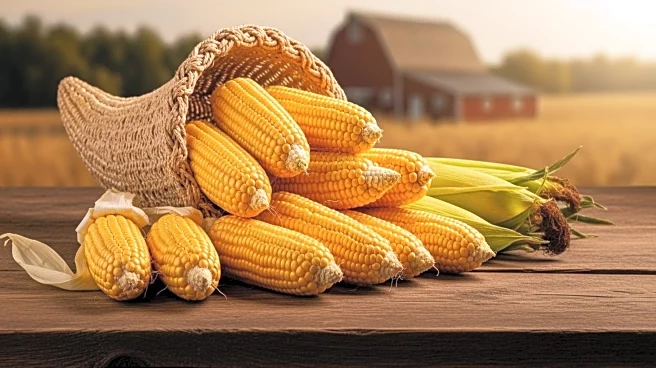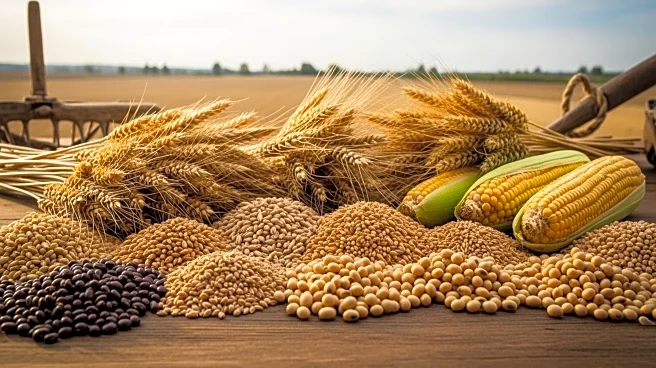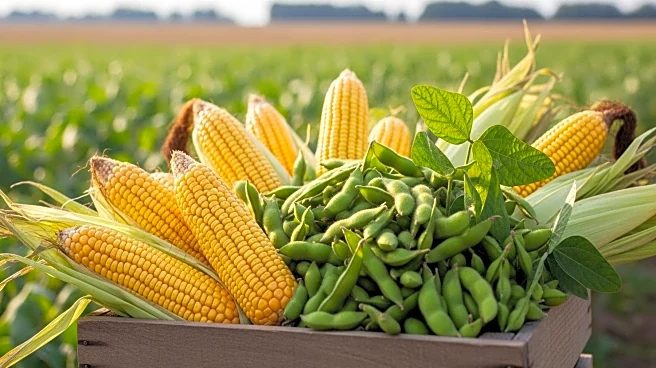What's Happening?
Corn prices have increased for the second consecutive week, with December corn closing at $4.20¼ per bushel, up 8¾ cents for the week. This rise is attributed to strong export demand, despite challenges in the soybean market due to reduced Chinese purchases. The commodity markets are seeing a shift in focus from crop size to demand, with fund managers anticipating that farmers will sell bushels at harvest to exit speculative short positions. While corn export demand remains robust, soybean demand is faltering, and biofuel demand is not sufficient to offset the loss of Chinese business. The livestock markets also saw gains, with live cattle and feeder cattle prices increasing.
Why It's Important?
The increase in corn prices is a positive development for farmers, providing some financial relief amid broader agricultural market challenges. Strong export demand for corn suggests resilience in this segment of the market, potentially offering stability for farmers reliant on corn production. However, the ongoing issues with soybean exports highlight the vulnerability of U.S. agriculture to international trade dynamics, particularly with China. The mixed performance in commodity markets underscores the need for strategic planning by farmers and market participants to navigate fluctuating demand and pricing conditions.
What's Next?
Farmers and market participants will likely continue to monitor export demand trends and adjust their strategies accordingly. The potential for further price fluctuations in the soybean market may prompt farmers to explore alternative markets or diversify their crop portfolios. The upcoming Labor Day holiday will see market closures, providing a brief pause for stakeholders to assess market conditions and plan for the remainder of the harvest season.











